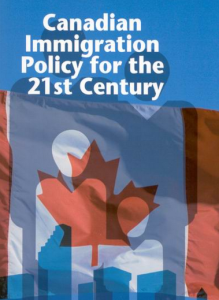Back in May, Francisco Lopez-Flores, a UCLA alumni, pitched the project “DACAMENT ME” to potential investors. The goal of DACAMENT ME is to track the economic benefits of immigration reform following 2012’s Executive Order by President Obama to implement DACA (Deferred Action for Childhood Arrivals). While DACAMENT ME has been gaining attention from beneficiaries of DACA as well as investors, one potential investor chalked Lopez-Flores’ project to a mere hobby telling him and his team to not waste their time with it.
However, for many students and young adults like Francisco, DACAMENT ME is far from a mere hobby. It is very personal. The executive order allows those individuals to acquire important documentation to obtain jobs, bank accounts and licenses in certain states. Needless to say, it was and still is met with heavy opposition and that is where DACAMENT ME hopes to help. A new member of the DACAMENT ME team, Kayleen Ports, explained the goal and use case of the project very well when she said that while activists have already attempted to make the emotional argument for immigration reform, a data driven argument is also needed.
The idea for DACAMENT ME came to Lopez-Flores when he noticed that after the implementation of DACA, his own wages increased since he no longer had to be paid under the table and was able to apply for steadier, higher paying jobs. After surveying over 200 students who benefited from DACA, Lopez-Flores and fellow UCLA students Stephanie Ramirez and Rudy Morales traveled to the White House where they presented their findings and analysis of DACA’s economic impact to key policymakers. By expanding their initial project for their Chicana/o studies class, Lopez-Flores and his team are hoping to use DACAMENT ME as a way to survey and track DACA recipients over a long period of time to show the positive effects that the policy has on the U.S. economy. Part of their findings demonstrated how recipients of DACA saw an average wage increase of nearly 100%. The research also showed that if the trend continues, it would add nearly $1.7 trillion to the U.S. economy.
Currently, DACAMENT ME is growing their team and working on a platform to turn DACAMENT ME into an official program at UCLA so that future students can continue participating. In May, apart from presenting the project to potential investors, the team won first place at the Latin@ Coder Summit hosted by Stanford University. The $1,000 price is being used to acquire the tools necessary to build the DACAMENT ME computer platform over the summer.
 The new immigration policy of the 1920s, the Great Depression, and World War II caused there to be a dramatic decrease in immigration to Canada and the United States. After World War II, legislation allowed refugees and displaced persons from the war to immigrate to the United States and Canada. Both countries’ ideologies began to shift more towards egalitarian ideas such as welfare state and multiculturalism which implemented more tolerance towards people of different races and lead the charge against racial discrimination.[1] During the 1960s, the Civil Rights Movement lead to an increasing interest group for racial acceptance which fostered the new immigration policies implemented by the United States and Canada. (Talk about Great Society coalition of Jews, Catholics and Liberals as described in Mills) It was with these policies in which Canada decided to take a different route than that of the United States’.
The new immigration policy of the 1920s, the Great Depression, and World War II caused there to be a dramatic decrease in immigration to Canada and the United States. After World War II, legislation allowed refugees and displaced persons from the war to immigrate to the United States and Canada. Both countries’ ideologies began to shift more towards egalitarian ideas such as welfare state and multiculturalism which implemented more tolerance towards people of different races and lead the charge against racial discrimination.[1] During the 1960s, the Civil Rights Movement lead to an increasing interest group for racial acceptance which fostered the new immigration policies implemented by the United States and Canada. (Talk about Great Society coalition of Jews, Catholics and Liberals as described in Mills) It was with these policies in which Canada decided to take a different route than that of the United States’.